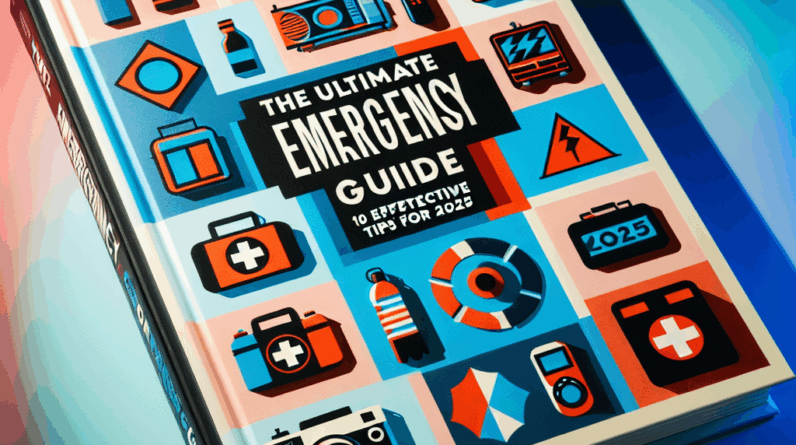Creating a community that can withstand natural disasters requires careful planning and active participation from all its members. This comprehensive guide delves into the crucial steps needed to enhance community preparedness, infrastructure strength, and sustainable practices, ensuring both social and economic resilience in the face of adversity.
Engaging the Community in Preparedness
Understanding the unique needs of your community is the first critical step in disaster preparedness. Holding community meetings allows residents to express their concerns and experiences, providing valuable insights into their specific needs and fears regarding disasters. It’s also beneficial to listen to the experiences of older community members who have lived through previous disasters; their knowledge is invaluable for crafting effective resilience strategies. To better understand community priorities, consider deploying surveys after these discussions to gather more structured feedback, ensuring that your disaster preparedness plans are well-aligned with the actual needs of the community.
Building a robust support network is essential for effective disaster response. Collaborate with local businesses, schools, and organizations to form a coordinated disaster response alliance. This network can offer immediate aid during emergencies and strengthen community bonds. Utilize local volunteer groups to conduct training drills and workshops to bolster confidence in disaster handling. Additionally, leverage social media platforms to keep the community engaged and informed, facilitating a rapid exchange of information and resources during emergencies.
Providing adequate training and resources to community members is crucial for empowering them to handle disasters confidently. Offer training programs on essential skills such as first aid and emergency response, and establish resource centers that provide access to crucial information and supplies. Collaborative efforts with local authorities to bring specialized workshops and training sessions can also enhance the community’s overall preparedness.
Strengthening Infrastructure
Assessing the vulnerabilities in your community’s infrastructure is crucial. Participate in or initiate assessments to identify and prioritize areas needing improvement, such as aging facilities and roads. Encourage residents to evaluate their property to promote a proactive approach to disaster resilience.
Proactively upgrading community facilities to better withstand disasters can save lives. Work with local experts to implement structural improvements and innovative solutions like flood barriers or elevated buildings. Engage the community in these projects to ensure their needs and preferences are considered, fostering a greater acceptance of necessary changes.
Establish clear, reliable communication channels to ensure that all community members receive timely updates during emergencies. Consider setting up community radio stations or text message alert systems, especially for those without internet access. Make sure to deliver messages in all languages prevalent within the community and designate trusted individuals who can relay emergency communications effectively.
Promoting Sustainable Practices
Adopting eco-friendly initiatives can significantly mitigate disaster impacts while enhancing community cohesion. Encourage activities like community gardening and environmental clean-ups to heighten awareness and cooperation among residents. Educate the community about sustainable practices such as water conservation and waste reduction, which not only protect the environment but also build a more resilient community.
Developing green spaces within the community serves multiple benefits. These areas can act as natural buffers against natural disasters while improving the overall quality of life for residents. Involve community members in the planning and maintenance of these spaces to ensure they meet the needs and desires of everyone.
Focus on enhancing energy resilience by promoting the use of renewable resources like solar panels, which remain functional even during power failures. Support local businesses in adopting energy-efficient practices and technologies, fostering a community-wide approach to sustainable and resilient energy use.
Establishing Emergency Response Plans
Creating clear, actionable emergency protocols is essential for minimizing confusion and chaos during disasters. Form a committee that includes local authorities to develop and regularly update these protocols. Organize community drills to practice these protocols, ensuring everyone knows their role and responsibilities when a disaster strikes.
Distribute responsibilities among community members to empower them and ensure a comprehensive response during emergencies. Regular meetings to review roles and plans help maintain readiness and accountability.
Form specialized volunteer response teams trained in specific emergency skills like first aid or search and rescue. These teams, equipped with proper training and support from local emergency services, can respond swiftly and effectively during crises.
Ensuring Social and Economic Equity
Inclusive disaster planning is crucial for addressing the needs of all community members. Host forums that encourage diverse participation and input, which can lead to more comprehensive and effective disaster strategies. Be mindful of cultural nuances when communicating about preparedness to ensure messages are clear and relatable to everyone.
Provide targeted support for vulnerable populations by collaborating with local social service organizations and setting up dedicated assistance programs. Tailored workshops can demystify preparedness for these groups, ensuring everyone has the knowledge and resources to cope with disasters.
Promote economic resilience by supporting local businesses in developing their own emergency plans and by fostering community initiatives that help maintain economic stability during and after disasters. This not only aids in quicker recovery but also strengthens the overall economic foundation of the community.
Frequently Asked Questions
1. What is the importance of community engagement in disaster preparedness?
Community engagement is essential as it ensures that the specific needs and concerns of community members are understood and addressed. Inclusive planning makes disaster response efforts more effective and widely supported.
2. How can we strengthen local infrastructure to withstand disasters?
Assessing vulnerabilities, upgrading essential facilities, and establishing effective communication channels are key strategies for strengthening local infrastructure, enhancing its resilience against disasters.
3. What are some eco-friendly practices that help enhance disaster resilience?
Sustainable initiatives like community gardening, developing green spaces, and promoting the use of renewable energy sources help reduce environmental impact and enhance community resilience.
4. Why is it essential to have distinct emergency response teams?
Dedicated response teams ensure organized and efficient action during emergencies, with trained volunteers ready to handle specific tasks, reducing overall chaos and improving response times.
5. How do we ensure that vulnerable populations receive support during disasters?
Proactively identifying and supporting vulnerable populations through dedicated programs and partnerships with social service organizations ensures that all community members have the resources and knowledge to navigate disasters effectively.




